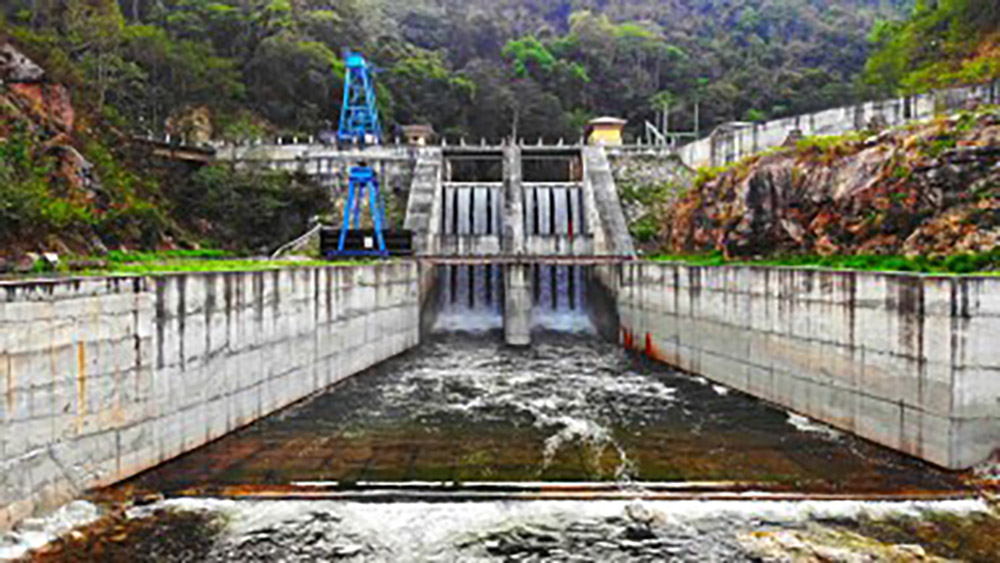
不丹,这个位于印度和中国之间的内陆小国,最为人所知的或许是“国民幸福总值”,该国宣称这一替代性衡量标准比国内生产总值更能全面反映经济发展状况。
然而,该国并不满足于仅以心灵之旅和喜马拉雅山脉闻名于世。如今,不丹期望吸引外国投资,培育新兴产业,并融入全球经济。
对于这个与世隔绝的喜马拉雅山国而言,这是一项艰巨的任务。该国近来一直受人才外流问题困扰,许多年轻不丹人纷纷出国寻求新机遇。
不丹主权财富基金Druk Holdings and Investments(以下简称DHI)首席执行官乌吉瓦尔·迪普·达哈尔表示:“地理环境与人口结构是我们面临的双重挑战。”他补充称,不丹和DHI需要“学会在发展过程中与世界接轨”。
然而,不丹及其主权财富基金(按全球标准来看规模很小)希望利用该国优势,包括廉价且分布广泛的水电资源,为数据中心和比特币挖矿提供动力。该国发展规划的核心是打造盖勒普正念之城这一全新区域,以此构建连接南亚与东南亚企业的桥梁。
“规模并不重要”
像挪威、沙特阿拉伯或新加坡这样的主权财富基金最为突出,是规模庞大的全球投资机构,能够动用从养老金、自然资源或外汇储备中获取的数千亿美元资金,致力于寻求高额回报并布局战略产业。
相较这些全球投资巨头,DHI的规模较小,小得多。
DHI成立于2007年底,管理资产规模约30亿美元,并持有24家不同的不丹本土公司股份。
相比之下,新加坡淡马锡控股公司(Singapore’s Temasek)管理着3000亿美元资产,持有新加坡航空公司(Singapore Airlines)和星展银行(DBS)等该国知名企业的股份。
但达哈尔从DHI的微型体量中洞察到机遇。他说:“规模并不重要,”相反,DHI能够聚焦于“运营效率与发展路径”。不过,他仍将淡马锡视为DHI学习的标杆。
达哈尔表示:“在治理和资产剥离方面,我们在很大程度上借鉴淡马锡的经验。不过,话虽如此,鉴于不丹与新加坡经济结构存在根本性差异,我们需要探索契合自身挑战的运营模式,以推动DHI实现发展。”
不丹的幸福指数与人才流失
不丹每隔几年就会通过一项包含300个问题的调查来计算国民幸福总值。2023年5月发布的最新国民幸福指数显示,2022年的得分为0.781,高于2010年的0.743。
同期,该国的人均国内生产总值从2435美元增至3711美元,但在2020年,即疫情最严重的时期,这一数据出现了急剧下滑。
经济悲观情绪,致使这个人口不足80万的国家面临人才外流挑战。2023年,约1.35万名不丹人(占总人口的1.6%)移民至澳大利亚。作为一个大部分国土仍被森林覆盖的国度,不丹正面临收入下滑、就业机会不足以及青年失业率攀升等多重挑战。
旅游业作为不丹的主要收入支柱之一,至今仍未从新冠疫情的冲击中完全复苏。该国去年接待游客14.5万人次,不到2019年315599人次的一半。该国对旅游业的看法也褒贬不一,推行“高价值、低影响”的旅游模式,以避免给本国基础设施带来压力。
豪赌
DHI管理着不丹电力公司(Bhutan Power Corporation)、不丹银行(Bank of Bhutan)和不丹电信(Bhutan Telecom)等多家关乎国家经济命脉的企业。达哈尔认为,DHI能够成为助力不丹在当今人工智能和互联网经济中占据一席之地的平台。

例如,拥有工程和水电专业背景的达哈尔希望不丹能够成为绿色能源企业探索“前沿技术”(比如抽水蓄能和氢能)并验证其商业可行性的试验场。
达哈尔认为:“我们能够在不丹快速开展技术测试,就地解决相关问题,然后将其推广至区域乃至全球。”
他尤为重视水力发电,这一能源形式目前是不丹的主要电力来源。当前,不丹的发电装机容量达2.5千兆瓦,另有3千兆瓦的装机容量处于建设阶段。
DHI也在涉足非传统投资领域。不丹是世界上持有比特币最多的主权国家之一。该国早在2019年便开启加密货币挖矿业务,彼时比特币价格略低于1万美元。截至2025年5月7日,比特币价格约为9.7万美元。
比特币挖矿通常能源消耗巨大,但达哈尔称,不丹利用水电和其他绿色能源开展加密货币挖矿业务,有助于抵消其他地区的碳排放。
“比特币就如同数字黄金。”达哈尔表示,并指出,该国的加密货币投资战略是其多元化另类投资策略的一部分。
作为不丹的投资机构,DHI也在为盖勒普正念之城的开发提供资金支持。这座特别行政区旨在构建南亚与东南亚互联互通的经济走廊,占地约2500平方公里,致力于将经济增长与可持续发展及身心平衡的生活相结合,并为医疗保健、科技和绿色能源等领域的企业开辟发展空间。
达哈尔表示:“我们正努力在DHI实施创新战略,携手全球创业者、学者及创新人才共同孵化初创企业,汇聚各方力量,培育初创企业文化和经济生态。” (财富中文网)
译者:中慧言-王芳
不丹,这个位于印度和中国之间的内陆小国,最为人所知的或许是“国民幸福总值”,该国宣称这一替代性衡量标准比国内生产总值更能全面反映经济发展状况。
然而,该国并不满足于仅以心灵之旅和喜马拉雅山脉闻名于世。如今,不丹期望吸引外国投资,培育新兴产业,并融入全球经济。
对于这个与世隔绝的喜马拉雅山国而言,这是一项艰巨的任务。该国近来一直受人才外流问题困扰,许多年轻不丹人纷纷出国寻求新机遇。
不丹主权财富基金Druk Holdings and Investments(以下简称DHI)首席执行官乌吉瓦尔·迪普·达哈尔表示:“地理环境与人口结构是我们面临的双重挑战。”他补充称,不丹和DHI需要“学会在发展过程中与世界接轨”。
然而,不丹及其主权财富基金(按全球标准来看规模很小)希望利用该国优势,包括廉价且分布广泛的水电资源,为数据中心和比特币挖矿提供动力。该国发展规划的核心是打造盖勒普正念之城这一全新区域,以此构建连接南亚与东南亚企业的桥梁。
“规模并不重要”
像挪威、沙特阿拉伯或新加坡这样的主权财富基金最为突出,是规模庞大的全球投资机构,能够动用从养老金、自然资源或外汇储备中获取的数千亿美元资金,致力于寻求高额回报并布局战略产业。
相较这些全球投资巨头,DHI的规模较小,小得多。
DHI成立于2007年底,管理资产规模约30亿美元,并持有24家不同的不丹本土公司股份。
相比之下,新加坡淡马锡控股公司(Singapore’s Temasek)管理着3000亿美元资产,持有新加坡航空公司(Singapore Airlines)和星展银行(DBS)等该国知名企业的股份。
但达哈尔从DHI的微型体量中洞察到机遇。他说:“规模并不重要,”相反,DHI能够聚焦于“运营效率与发展路径”。不过,他仍将淡马锡视为DHI学习的标杆。
达哈尔表示:“在治理和资产剥离方面,我们在很大程度上借鉴淡马锡的经验。不过,话虽如此,鉴于不丹与新加坡经济结构存在根本性差异,我们需要探索契合自身挑战的运营模式,以推动DHI实现发展。”
不丹的幸福指数与人才流失
不丹每隔几年就会通过一项包含300个问题的调查来计算国民幸福总值。2023年5月发布的最新国民幸福指数显示,2022年的得分为0.781,高于2010年的0.743。
同期,该国的人均国内生产总值从2435美元增至3711美元,但在2020年,即疫情最严重的时期,这一数据出现了急剧下滑。
经济悲观情绪,致使这个人口不足80万的国家面临人才外流挑战。2023年,约1.35万名不丹人(占总人口的1.6%)移民至澳大利亚。作为一个大部分国土仍被森林覆盖的国度,不丹正面临收入下滑、就业机会不足以及青年失业率攀升等多重挑战。
旅游业作为不丹的主要收入支柱之一,至今仍未从新冠疫情的冲击中完全复苏。该国去年接待游客14.5万人次,不到2019年315599人次的一半。该国对旅游业的看法也褒贬不一,推行“高价值、低影响”的旅游模式,以避免给本国基础设施带来压力。
豪赌
DHI管理着不丹电力公司(Bhutan Power Corporation)、不丹银行(Bank of Bhutan)和不丹电信(Bhutan Telecom)等多家关乎国家经济命脉的企业。达哈尔认为,DHI能够成为助力不丹在当今人工智能和互联网经济中占据一席之地的平台。
例如,拥有工程和水电专业背景的达哈尔希望不丹能够成为绿色能源企业探索“前沿技术”(比如抽水蓄能和氢能)并验证其商业可行性的试验场。
达哈尔认为:“我们能够在不丹快速开展技术测试,就地解决相关问题,然后将其推广至区域乃至全球。”
他尤为重视水力发电,这一能源形式目前是不丹的主要电力来源。当前,不丹的发电装机容量达2.5千兆瓦,另有3千兆瓦的装机容量处于建设阶段。
DHI也在涉足非传统投资领域。不丹是世界上持有比特币最多的主权国家之一。该国早在2019年便开启加密货币挖矿业务,彼时比特币价格略低于1万美元。截至2025年5月7日,比特币价格约为9.7万美元。
比特币挖矿通常能源消耗巨大,但达哈尔称,不丹利用水电和其他绿色能源开展加密货币挖矿业务,有助于抵消其他地区的碳排放。
“比特币就如同数字黄金。”达哈尔表示,并指出,该国的加密货币投资战略是其多元化另类投资策略的一部分。
作为不丹的投资机构,DHI也在为盖勒普正念之城的开发提供资金支持。这座特别行政区旨在构建南亚与东南亚互联互通的经济走廊,占地约2500平方公里,致力于将经济增长与可持续发展及身心平衡的生活相结合,并为医疗保健、科技和绿色能源等领域的企业开辟发展空间。
达哈尔表示:“我们正努力在DHI实施创新战略,携手全球创业者、学者及创新人才共同孵化初创企业,汇聚各方力量,培育初创企业文化和经济生态。” (财富中文网)
译者:中慧言-王芳
Bhutan, the small landlocked country wedged between India and China, is perhaps best known for “Gross National Happiness,” the alternate measure that the country claims gives a fuller understanding of economic development than GDP.
But the country wants to be known for more than just spiritual tourism and Himalayan mountains. Bhutan now hopes to attract foreign investment, foster new industries, and enter the global economy.
It’s a steep hill to climb for the isolated Himalayan country, which has recently grappled with a brain drain problem as young Bhutanese travel abroad for new opportunities.
“Geography is a challenge for us, demography is a challenge for us,” said Ujjwal Deep Dahal, CEO of Druk Holdings and Investments (DHI), Bhutan’s sovereign wealth fund. Bhutan and DHI need to “learn to engage with the world as we move,” he added.
Yet Bhutan and its sovereign wealth fund–tiny by global standards–hope to leverage the country’s strengths, including cheap and widespread hydropower, which in turn can feed investments in data centers and Bitcoin mining. Key to the country’s plan is the Gelephu Mindfulness City, a new zone to connect Bhutan with businesses in South and Southeast Asia.
‘Size does not matter’
The most prominent sovereign wealth funds—like those from Norway, Saudi Arabia or Singapore—are gigantic global investors. These funds move hundreds of billions of dollars of funds, garnered from pensions, natural resources or foreign exchange reserves, to seek high returns and invest in strategic industries.
DHI is smaller compared to these global giants. A lot smaller.
Founded in late 2007, DHI has around $3 billion in assets under management, and owns stakes in 24 different Bhutanese companies.
By comparison, Singapore’s Temasek has $300 billion in assets under management, with stakes in the country’s most prominent companies, like Singapore Airlines and DBS.
But Dahal sees opportunity in DHI’s small size. “Size does not matter,” he said; instead, DHI can focus on “efficiency and how we grow.” Still, he sees Temasek as a role model for DHI.
“We look at Temasek to a large extent, in terms of governance, in terms of divestments. But having said that, Bhutan’s economy and Singapore’s are completely different,” Dahal said. “We need to look at running DHI in a way that’s complementary to the challenges.”
Bhutan’s happiness and brain drain
Bhutan calculates Gross National Happiness through a survey of 300 questions administered every few years. The most recent GNH index, released in May 2023, reported a score of 0.781 for 2022, higher than the 0.743 reported in 2010.
The country’s GDP per capita grew from $2,435 to $3,711 over the same period—yet experienced a steep decline in 2020, the height of the pandemic.
Pessimism about the economy has meant that the country, with a population of less than 800,000, is currently going through a brain drain. Around 13,500 Bhutanese, equal to 1.6% of the country’s entire population, moved to Australia in 2023. The country, which is still mostly covered in forest, has battled declining income, a lack of job opportunities, and rising youth unemployment.
Tourism is one of Bhutan’s main sources of income, but has yet to recover from the COVID pandemic. The country reported 145,000 tourist arrivals last year, less than half of the 315,599 arrivals recorded in 2019. The country also has a mixed view of the tourism industry, promoting a “high-value, low-impact” tourism model to avoid stressing the country’s infrastructure.
Big bets
DHI manages several firms that are key to the country’s economy, like Bhutan Power Corporation, Bank of Bhutan, and Bhutan Telecom. And Dahal thinks DHI can be a platform to carve out a niche for Bhutan in today’s AI and internet economy.
For example, Dahal, who has a background in engineering and hydropower, hopes that Bhutan can be a place where green energy firms can explore “interesting technologies,” like pump storage and hydrogen power, and test their commercial viability.
“We can quickly test it out in Bhutan, solve the problem in Bhutan and take it global or regional,” Dahal argued.
He’s particularly focused on hydropower, now Bhutan’s major source of electricity generation. Bhutan currently has 2.5 gigawatts of current capacity, and an additional 3 gigawatts under construction.
DHI’s also making some more unconventional bets. Bhutan is one of the world’s largest sovereign holders of Bitcoin. The country started mining the cryptocurrency back in 2019, when it was worth just under $10,000. It’s now worth around $97,000 as of May 7, 2025.
Bitcoin mining is normally energy intensive, but Dahal claims that Bhutan’s crypto mining, due to its use of hydropower and other green energy, helps offset carbon emissions elsewhere.
“Bitcoin is a parallel to digital gold,” Dahal said, noting that the country’s cryptocurrency strategy is part of a diversified approach for alternative investments.
DHI, as Bhutan’s investment arm, is also supporting the development of Gelephu Mindfulness City, a special administrative region that hopes to be an economic corridor to South and Southeast Asia. The City, which spans about 2,500 square kilometers, tries to combine economic growth with sustainability and holistic living, and offers space to businesses like healthcare, technology, and green energy.
“We’re trying to bring an innovation strategy into DHI to build startups with global founders, academicians and innovators, and bring them together to build a startup culture and economy,” Dahal said.






